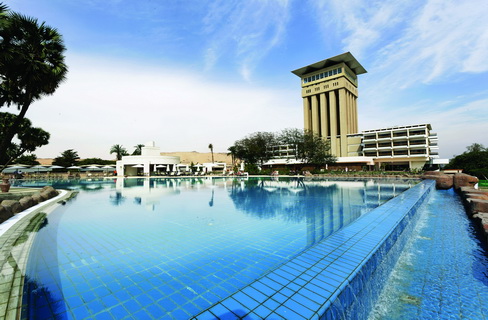Employees in the tourism sector confirmed that the January 25th revolution negatively impacted the construction of new hotels and resorts, and that only a small proportion of projects have been finished since then.
Investors expected investment in the tourism sector to recover by the beginning of next October and for construction to pick up in tourist areas which account for half of all hotel construction.
Mohamed El-Sayyad Okasha, president of the Arab Hotels Company, said that construction in the tourism sector has decreased significantly in comparison to the period before 2011, as 2010 witnessed enormous growth and demand for tourist facilities.
He added that, despite the fall in the price of construction materials, most resorts and hotels delayed annual upkeep and maintenance because of falling revenues and declining numbers of customers.
He explained that the tourism sector consumes upwards of 20% of construction materials especially since the recession in the real estate market before the revolution.
He added that developers added about 208,000 rooms between 2008 and 2010 and 70% of them were expected to be operation by the end of last year.
He stressed that a state of anticipation and apprehension exists in Egypt with regard to the tourism sector, and that that apprehension led to a recession in the sector and a decrease in prices.
He estimated that the cost of investing per room in a four or five star hotel is between EGP 700,000 and EGP 1m, a cost that figures in landscaping, walkways, swimming pools, and other facilities.
Maher Abul Nour, head of the Giftun Azur Resort in Hurghada, said that investment in the tourism sector ceased entirely during the last year with the exception of individual cases.
He added that that most tourist facilities were avoiding spending the nearly 5% of their revenues required for upkeep and maintenance, but that it depended on the quality of the hotel, its location, and its average occupancy.
He noted that upkeep and maintenance were negatively affected by the decrease in the number of tourists coming to Egypt last year, but that he expects the sector to recover this year.
Adel El-Sherbini, a member of the South Sinai Tourism Investors Association, said that he expected tourism to recover in the coming year.
He added that the Red Sea coast and the southern Sinai together account for approximately 60% of tourism related construction.
Hani Gawish, a member of the Nuweiba Investors Association, said that the cost per hotel room over the last 10 years tripled, as the price per square meter of concrete went from EGP 480 to EGP 1,300.
He expected that investors in the current period will concentrate on purchasing and investing in existing facilities instead of constructing new ones.
He added that hotels are currently concentrating their renovation efforts on repainting, replacing walkways, tiling, doors, and doorways, noting that the yearly cost of renovation for a 150-room hotel varied between EGP 20,000 and EGP 50,000.
He said that the cost of construction materials varied based on the cost of shipping and that the security breakdown and the diesel crisis led to a rise in prices, adding that the price per cubic meter of sand shipped from Suez to Nuweiba was EGP 60 compared to only EGP 5 in Suez itself.
He concluded, saying that the rise in the price of certain construction materials led investors to think about switching to natural materials such as rocks due to their comparatively lower cost in regions far from inhabited areas.





